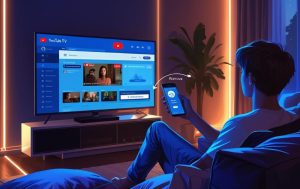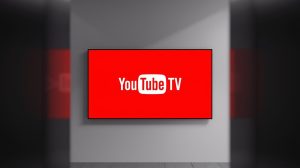
What is YouTube TV? A Complete Guide for Streamers
What is YouTube TV? A Complete Guide for Streamers Table of Contents Streaming television has completely changed the way we watch shows, sports, and news.
If you’re wondering why is YouTube TV buffering so often during your favorite shows or live events, you’re not alone. Buffering interrupts your viewing by pausing the video to load more data, creating an annoying and frustrating experience. This is usually caused by factors like lag issues, slow internet, or poor streaming quality. Understanding the reasons behind these interruptions is the first step toward fixing them.
YouTube TV has become one of the most popular streaming services, offering live TV and on-demand content. However, many users ask, “YouTube TV not working?” frequently when their streaming experience is interrupted. This article explores the main causes of buffering on YouTube TV and provides practical troubleshooting steps so you can enjoy smooth, uninterrupted streaming every time.
When you ask yourself why is YouTube TV buffering, it’s important to understand what buffering actually means. Buffering happens when your streaming device temporarily pauses playback to load more video data before continuing. This delay causes the video to freeze or stop momentarily, leading to a poor user experience.
Buffering is different from lag, although both can affect streaming quality. Lag refers to delayed responses or stuttering during playback, often due to device performance or network jitter. Buffering specifically relates to the video data loading process. Streaming content on YouTube TV requires a stable and fast internet connection, as well as efficient device performance. When any of these components fail or struggle, buffering occurs.
In many cases, users ask, why is YouTube TV buffering even when they think their internet should be fast enough. The answer often lies in network fluctuations, device issues, or YouTube TV problems today. Recognizing these differences helps in troubleshooting the problem effectively.
One of the biggest reasons users ask why is YouTube TV buffering is because their internet connection is too slow to handle the stream. YouTube TV requires a certain internet speed to deliver smooth playback, especially for high-definition (HD) and 4K Ultra HD content.
If your internet speed is below these recommendations, buffering will happen regularly. You can test your internet speed using online tools such as Speedtest.net. Keep in mind that your internet provider might also throttle speeds during peak hours or if you have exceeded your data cap, which causes slow internet and subsequent buffering. Learn more about YouTube TV cost and how it relates to streaming quality.
Another common cause of buffering on YouTube TV is related to the devices you use for streaming. Outdated or low-performance devices like older smart TVs, streaming sticks (e.g., Fire Stick or Roku), or devices with outdated firmware can struggle to process streams efficiently.
Because of this, knowing why is YouTube TV buffering sometimes means checking if your hardware meets the minimum requirements and ensuring your devices have the latest software updates installed. See more in YouTube TV troubleshooting.
Poor Wi-Fi signal strength or interference is a frequent culprit behind buffering. Even if you have a fast internet plan, your streaming quality can suffer if your router is poorly placed or your Wi-Fi network is congested.
Switching your streaming device to the 5 GHz Wi-Fi band can improve speeds and reduce buffering. Alternatively, using a wired Ethernet connection provides the most stable and fastest connection for streaming.
Sometimes the root cause of buffering is a simple but overlooked factor: an outdated YouTube TV app. Developers frequently update the app to improve streaming performance, fix bugs, and add new features.
If you notice persistent buffering, checking your app version and updating it is a quick and effective fix.
If you’re struggling with buffering and asking, why is YouTube TV buffering on my device? follow these steps to fix the problem:
These steps often resolve most buffering issues by targeting common causes like slow internet, device overload, and app glitches.
If buffering continues even after trying basic troubleshooting, more advanced solutions might be needed. Here are some tips to help fix persistent lag and buffering:
These advanced steps can significantly improve your streaming quality if buffering persists.
Choosing the right device and streaming setup can prevent buffering and lag issues on YouTube TV:
Knowing why is YouTube TV buffering can often be answered by improving your device and network setup.
Many users wonder if YouTube TV’s subscription cost justifies its streaming quality. Priced at $82.99 per month, YouTube TV delivers:
Compared to competitors like Hulu or Sling, YouTube TV offers robust streaming quality and features that justify its price. Still, buffering and lag issues can detract from this experience if not addressed properly.
If you have tried every troubleshooting tip and still ask, why is YouTube TV buffering?, it might be time to get professional help. tv.youtube.com/start specializes in providing 24/7 support for YouTube TV users facing activation problems, device setup, or persistent buffering and lag issues.
Their experts can diagnose your problem quickly and guide you through fixes tailored to your device and network. Don’t let buffering ruin your entertainment—call us and get streaming smoothly again with Youtvstart’s help.
Understanding why is YouTube TV buffering involves checking internet speed, device health, Wi-Fi signal strength, and app updates. Most buffering problems are caused by slow internet, outdated devices, or interference in your network. By following the troubleshooting steps outlined here and ensuring your devices and apps are updated, you can greatly improve your streaming quality.
If problems persist, professional assistance from Youtvstart is available to help you activate, set up, and troubleshoot your youtubetv.com start service for a buffer-free experience.
Still facing buffering or lag issues? Visit Youtvstart.com for expert 24/7 support. Whether you need activation help, device setup, or troubleshooting, Youtvstart is your go-to source for uninterrupted YouTube TV streaming.
YouTube TV buffers mainly due to slow internet speeds, device issues, poor Wi-Fi signals, or outdated apps. Addressing these factors usually resolves buffering.
Stop lag by ensuring a strong internet connection, using updated devices, reducing video quality, and clearing app cache.
Yes. Insufficient internet speed is the most common cause of buffering. YouTube TV recommends at least 10 Mbps for HD streaming.
It could be due to outdated app versions, weak Wi-Fi signals, or older hardware struggling with streaming.
Yes, multiple devices streaming or downloading simultaneously can overload your internet bandwidth, leading to buffering.
VPNs can slow down your connection and cause buffering by routing traffic through distant servers.
Lowering video resolution reduces bandwidth requirements, which can help minimize buffering on slower connections.
Contact professional support services like Youtvstart for expert help with activation, setup, and troubleshooting.


What is YouTube TV? A Complete Guide for Streamers Table of Contents Streaming television has completely changed the way we watch shows, sports, and news.

How to Speak to a Person at YouTube TV Table of Contents If you are a YouTube TV subscriber, one of the most common questions

How Much is YouTube TV a Month? Table of Contents If you’re thinking about cutting the cord and moving away from expensive cable, one of